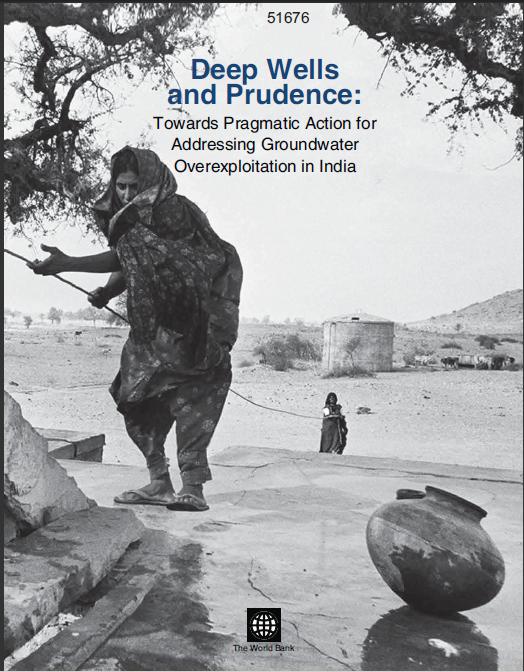North Bihar Plains
The benevolence of a flood
Posted on 18 Sep, 2014 10:10 AMBihar is no stranger to floods. The high-volume, high-velocity floods caused by large infrastructure projects regularly disrupt lives and decimate entire villages. This is the oft-repeated narrative, one of a helpless population as victims.

Fluid rivers but concrete mindsets
Posted on 25 Mar, 2014 08:42 PMThe twin sisters: Bihar is a land of fertile farms bearing sugarcane, wheat, rice, gram and pulses. Interspersed between the fields are venerable mango groves. Of Bihar's children, perhaps none is as universally loved as Sita. The village that she was born in -Sitamarhi- welcomed another daughter along with Sita.

Engineering witchcraft in Bihar
Posted on 09 Feb, 2014 07:46 PMIt's been years since Bhutahi Balan, a small tributary of the Kosi river in Madhubani, North Bihar, has been causing devastation on both its banks. Dinesh Mishra in his book 'Story of a ghost river and engineering witchcraft' objectively analyses the failure of embankments, which are raised banks to contain the river's flooding.

The profitable toilet
Posted on 27 Jan, 2014 12:29 PMWhen Panchamlal Mahto was a toddler, he would frequently squat and poop as the urge took him irrespective of where he was. His mother would take a handful of ash and sprinkle it over the 'gift'. The ash would absorb the liquid, enabling the whole mess to be easily swept away. Back then, Vinita was still not born.

Qualitative and quantitative water scarcity issues in Bihar - A presentation
Posted on 21 Nov, 2011 11:49 AMThis presentation highlights the grave water situation in Bihar in the context of the emerging water quality and quantity issues that the world and especially developing countries will be facing in the near future.
Introducing a new farming technique (SRI) in the Gangetic plains,Bihar
Posted on 28 Jul, 2011 03:19 PMArticle and Image courtesy: BodhiCommons
Accessing safe drinking water during floods in North Bihar
Posted on 13 Jun, 2011 03:23 PMThis season in the region is commonly referred to as – Barh (flood). For centuries local people have treated it as ‘a way of life’, and found ways to deal with it. Post independence, this ‘way of life’ gradually transformed into an assured annual devastation. The once self-sufficient communities in the flood plains have been relegated to being highly dependent on sources external to the village for their survival during floods.
Deep wells and prudence - Towards pragmatic action for addressing groundwater overexploitation in India - A World Bank document (2010)
Posted on 12 Apr, 2011 01:51 AM India is the largest user of groundwater resources in the world. It is estimated that approximately 230 cubic kilometers per year is used annually, this is more than a quarter of the total world consumption from this resource.
India is the largest user of groundwater resources in the world. It is estimated that approximately 230 cubic kilometers per year is used annually, this is more than a quarter of the total world consumption from this resource.
It is in this context that this World Bank report looks at the reasons for this quantum of groundwater usage.
The report delves into socio-economic and political reasons and looks at policies which inadvertently promote so much extraction. The report also analyses various attempts to manage this resource. These attempts range from government and international agency efforts directed to grassroots mobilisations. Finally the report comes out with suggestions to deal with this crisis.
Assessing and improving water productivity in conservation agriculture systems in the Indus-Gangetic basin – A working paper by Challenge Program on Water and Food
Posted on 22 Aug, 2010 02:38 PMThe paper by Challenge Programme on Water and Food (CPWF) attempts to assess and improve water productivity in conservation agriculture systems in the Indus-Gangetic basin, in which during the past 40 years an intricate mosaic of interactions between man & nature, poverty & prosperity and problems & possibilities has emerged. Rapid expansion in agricultural water use is a common theme across these interactions and access to water is central to the livelihoods of the rural poor.
Indo-Gangetic river basins: Summary situation analysis by Challenge Program on Water and Food
Posted on 16 Aug, 2010 07:37 PMThe paper by the Challenge Programme on Water and Food (CPWF) - Basin Focal Project provides a brief situation analysis related to water, agriculture & poverty, water resources, water productivity, institutional aspects and opportunities & risks related to the development of the Indo-Gangetic basin (IGB). Management of IGB water resources presents some formidable challenges and, therefore, steps must be taken towards integrated management of the IGB’s water and land resources in order to ensure the future sustainability of all production and ecosystems in the basin.